Ground cover mentioned below assumes that there is at least 30% of the stubble upright and anchored to the soil. This component stabilises stubble and trash that is flattened or not anchored. The effective percentage of ground cover can be estimated by laying all the stubble flat, then looking at the ground covered. All the weights of stubble mentioned are for cereals, and lupin weights for the same level of protection will be much higher.
Stubble levels to prevent wind erosion
- Keep at least 50% ground cover to reduce the risk of wind erosion.
- Ground cover of 30% to 50% is a higher risk and might need additional management to prevent wind erosion.
- Less than 30% ground cover is a high risk and will need additional management (refer to Managing wind erosion).
- As a rule of thumb, the stubble load following harvest will be approximately 1.5 to 2 times the grain yield for wheat, and between 2 to 3 times the grain yield for canola.
- A 750 kg per hectare yielding wheat crop has the stubble potential (1,500 kg/ha) to prevent erosion.
These levels of stubble might need to be:
- higher on steep slopes and where water erosion is a possibility
- lower, where frost is likely in a following crop (see Managing frost risk).
Targets for stubbles
Leave about 2250 kg/ha of stubble after harvest. Cultivation for crop establishment will destroy about 750 kg/ha leaving about 1500 kg/ha of stubble (equivalent to about 50% ground cover at the lowest point) to protect the disturbed soil surface.
Leave about 1500 kilograms per hectare (kg/ha) of stubble after harvest. Grazing will destroy about 500 kg/ha leaving about 1000 kg/ha of stubble (equivalent to about 50% ground cover at the lowest point) during pasture establishment. Grazing causes some soil disturbance.
Leave about 1125 kg/ha of stubble after harvest. There is less grazing value in this level of stubble, and grazing will destroy about 375 kg/ha leaving about 750 kg/ha of stubble during crop establishment (equivalent to about 50% ground cover at the lowest point).
Leave about 1000 kg/ha of anchored stubble after harvest. This will leave about 750 kg/ha at the lowest point, but there is no soil disturbance or damaged standing stubble.
Leave about 1500 kg/ha of anchored stubble after harvest. Cultivation for crop establishment will destroy about 500 kg/ha leaving about 1000 kg/ha to protect the slightly disturbed soil.
Leave about 1000 kg/ha of stubble after harvest.
How to use the photo-standards
There are 2 sets of photographs:
- Vertical photographs give a picture of percentage ground cover.
- Oblique photographs (angle looking towards the horizon) give a better view of what the wind ‘sees’, but also can lead to overestimating the amount of ground cover.
For cereal crops, 1000 kg/ha stubble provides enough wind protection to prevent wind erosion. Because lupin stalks are heavier than cereals, about 2000 kg/ha of lupin stubble is needed to give the same protection.
The photo standards also show levels above and below the critical amount for cereals and lupins. Use the photo standards a month or two before the critical level will be reached in late summer to early autumn.
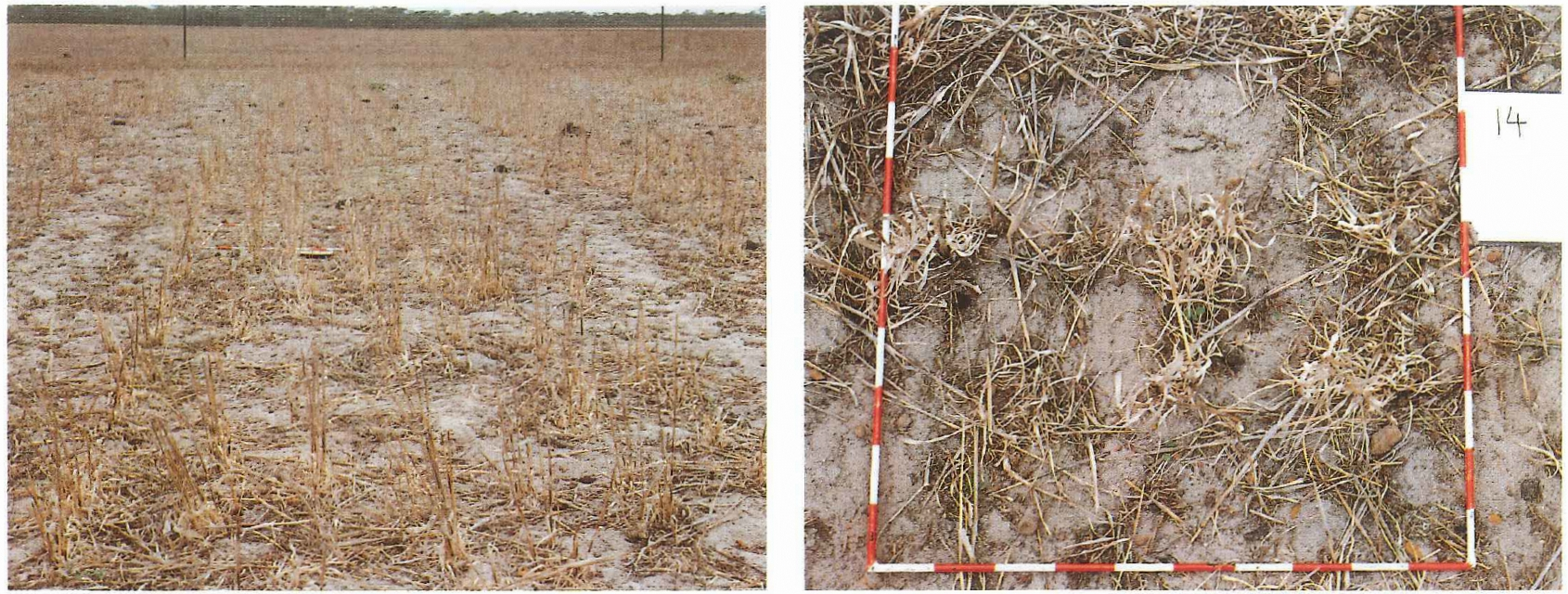
Cereals
Figure 1 Above: An oblique view of 1400 kg/ha of cereal stubble, more than enough to minimize wind erosion. Right: The 0.25 of a square metre quadrat in this vertical photo represents 1400 kg/ha of cereal stubble.
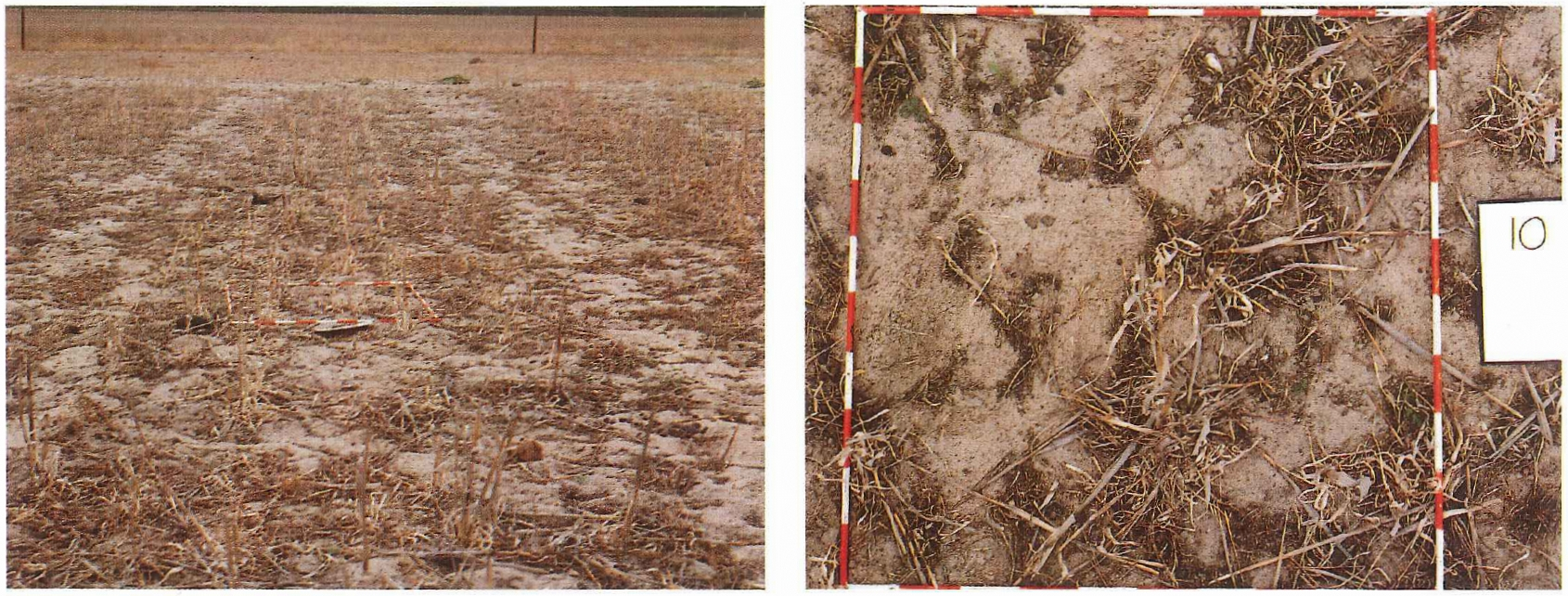
Cereals
Figure 2 Above: An oblique photo of a trial plot representing 1000 kg/ha of cereal stubble, the minimum needed to resist wind erosion. This amount of stubble represents about 40% ground cover. RIGHT: A vertical view of a quadrat representing 1000 kg/ha of cereal stubble, or about 40% ground cover.
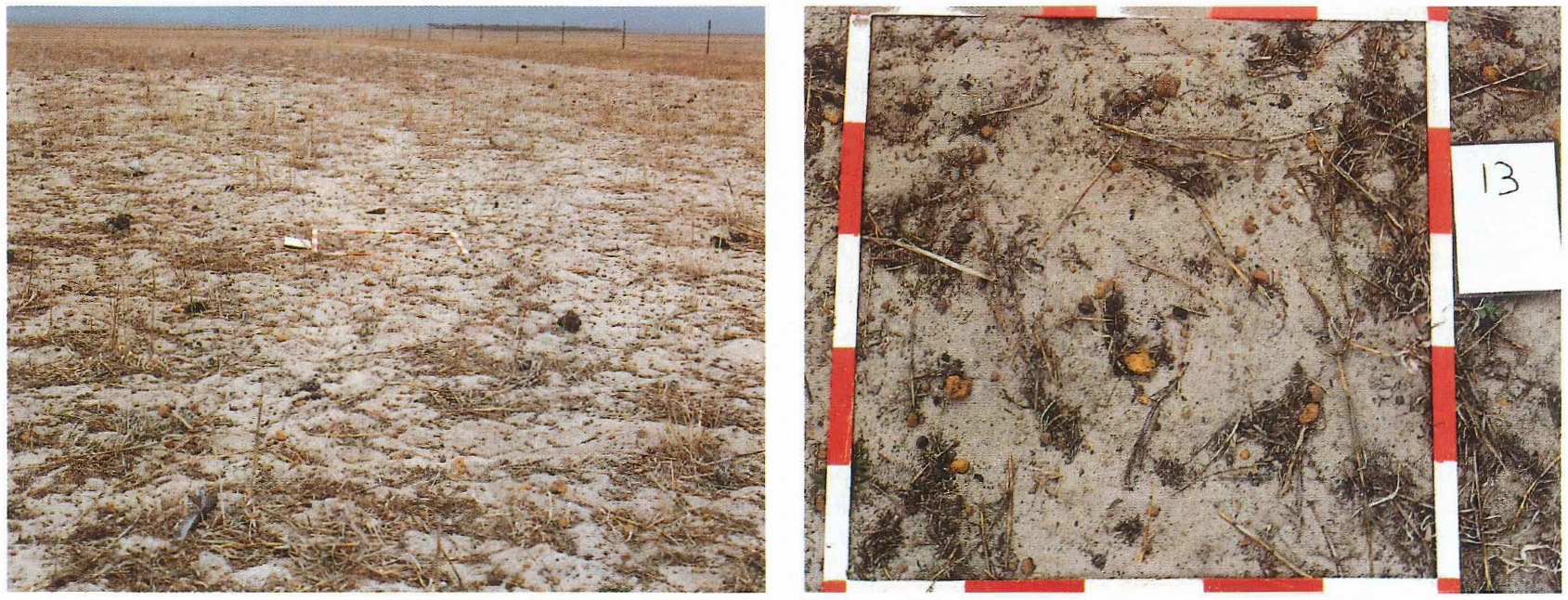
Cereals
Figure 3 Above: This paddock is highly prone to wind erosion, as it contains only 400 kg/ha of cereal stubble, not enough to resist erosion. RIGHT: The area in the quadrat shows the lack of cereal stubble to resist wind erosion.
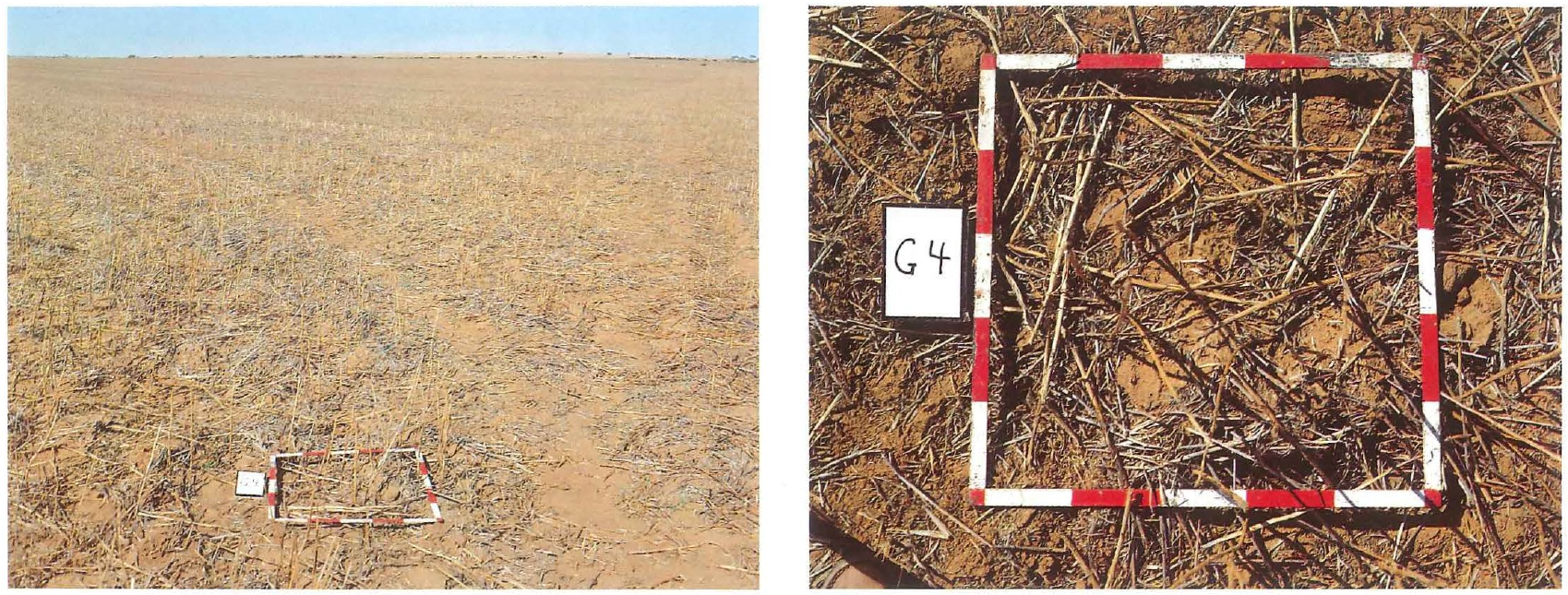
Lupins
Figure 4 Above: An oblique view of lupin stubble with enough stubble to reduce wind erosion after cultivation. This amount of stubble represents 6852 kg/ha, of which 28I2 kg/ha is effective stubble and 4040 kg/ha is small and loose ineffective stubble. RIGHT: A vertical view of sufficient (total 6852 kg/ha) lupin stubble.
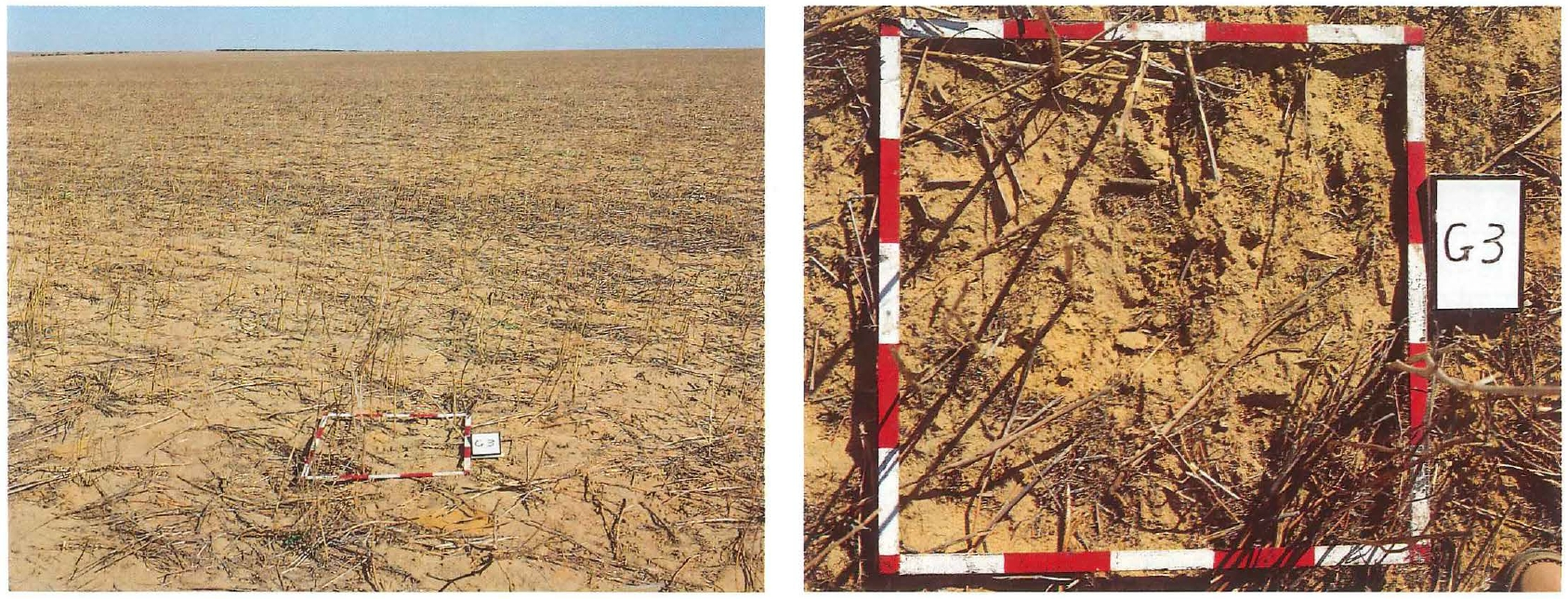
Lupins
Figure 5 Above: There is enough lupin stubble in this paddock to minimise wind erosion, but it may not be effective after cultivation. There is a total of 2432 kg/ha of stubble of which 2008 kg/ha represents effective stubble, and 424 kg/ha is small and loose ineffective stubble. RIGHT: A vertical view of 2432 kg/ha of lupin stubble.
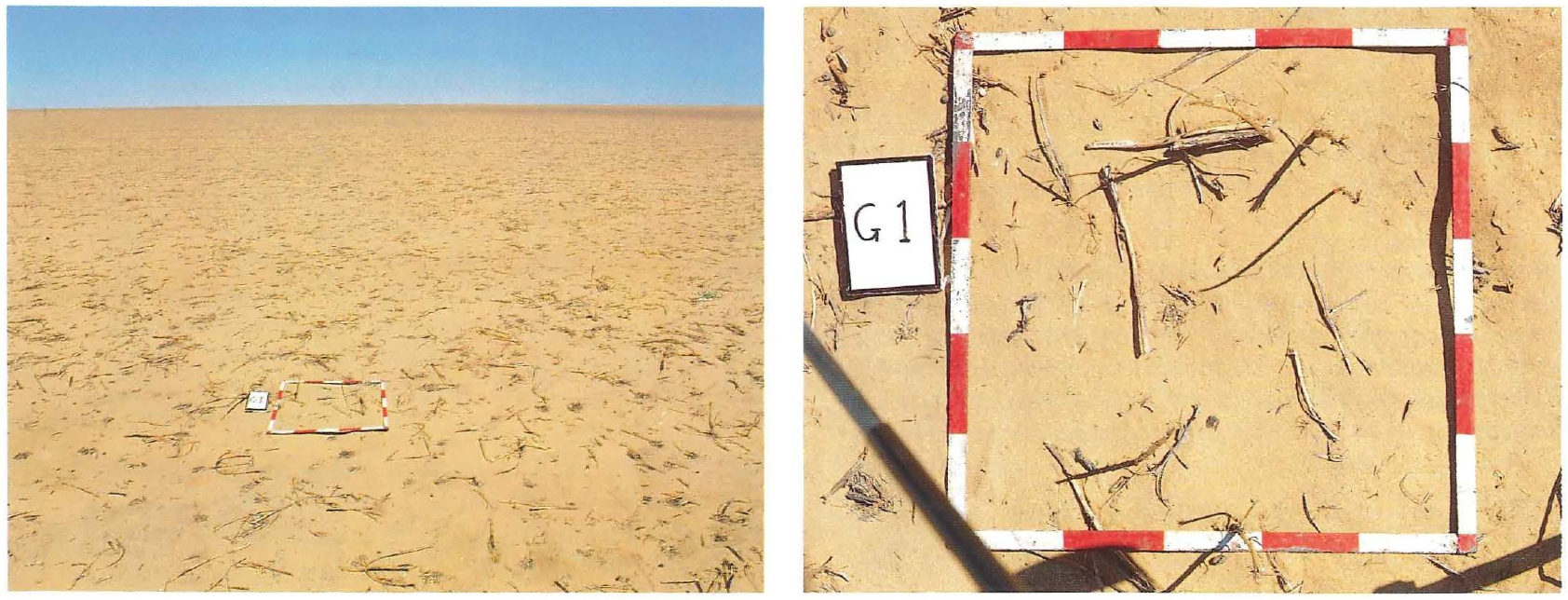
Lupins
Figure 6 Above: An oblique view of lupin stubble with inadequate stubble to reduce wind erosion. This amount of stubble represents 816 kg/ha. RIGHT: A vertical view of inadequate (total 816 kg/ha) lupin stubble.
Contact Us
-
Justin LaycockFisheries and Agriculture Resource Management Research Scientist
